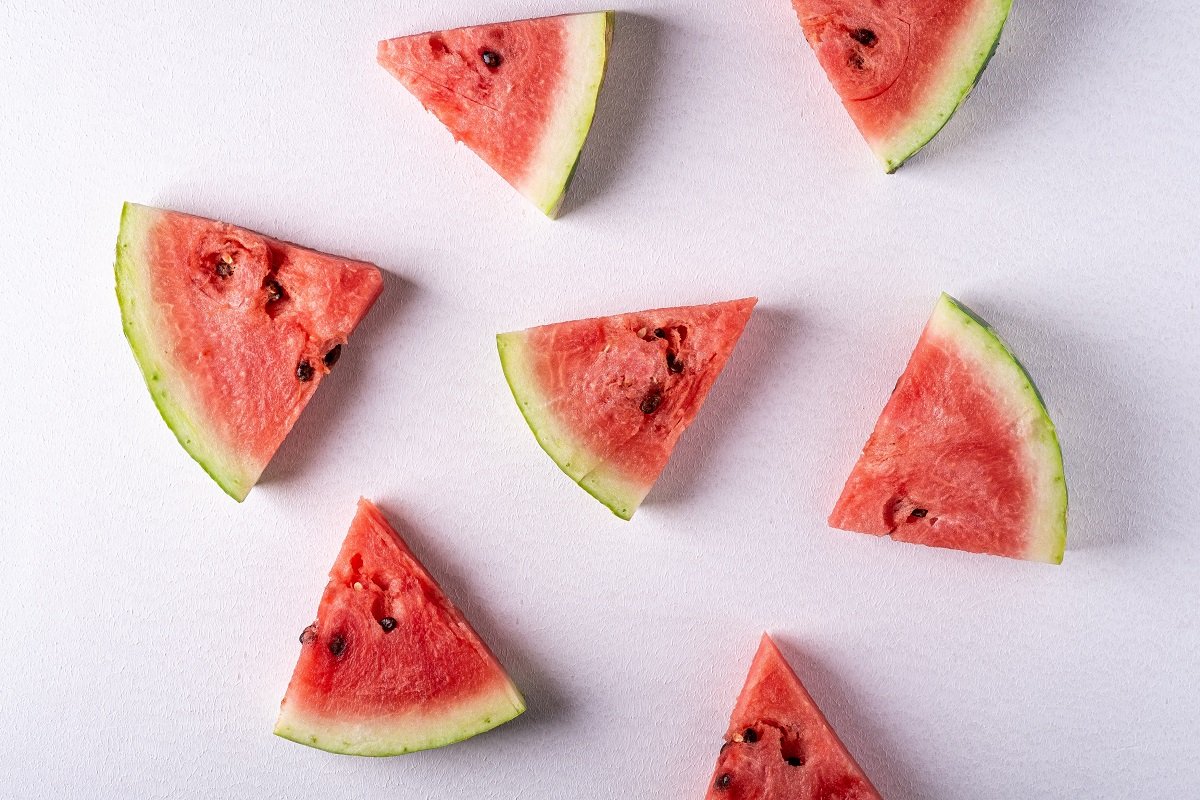Watermelon: A Fruit for the Gods (and the Dry Desert)
"Watermelon is the chief of this world's luxuries, king by the grace of God over all the fruits of the earth. When one has tasted it, he knows what the angels eat." – Mark Twain
There’s one fruit I reserve only for summer. I might indulge in banana on a gray fall day or an orange coming out of winter. Of course, we eat berries all spring. But watermelon. Watermelon is one fruit that seems not, at least for me, to cross beyond the cooling boundaries of a hot summer day.
Do you have a peak watermelon moment memory? Mine is from my early 20s, in a motel of all places, when my brother, father, and I had traveled to Florida. How we ended up with a giant watermelon in our room, with the door open and hot Florida air blowing through, I don’t recall. I vividly remember the cracked open melon, a huge bowl of juicy red framed with bright green, and that my brother and I had spoon after spoon of unlimited cold, refreshing watermelon. It was like a trough of ice water but in food form.
The ancient Kalahari people were on to something. Some 5,000 years before that hot day indulging in an icy cold Florida-grown watermelon, the ancestor to today’s watermelon grew wild—and still grows wild—on a vine in southern Africa. The indigenous Kalahari, living in the interior plains that stretch across today’s Botswana, Namibia, and South Africa, used this tough drought-tolerant watermelon as a source of water.
Aptly named, watermelon is 92% water. Watermelon (Citrullus lanatus) is a member of the Cucurbitaceae plant family—making it relatives with cucumber, squash, and pumpkin. It took 1,000 years for watermelon to wind its way north, and perhaps at the hands of seed breeders, become the sweeter version we know today.
Both seeds and paintings of watermelon have been found in Egyptian burial tombs more than 4,000 years old. Watermelons were often placed in the tombs of kings to nourish them in the afterlife.
From northern Africa, watermelons were brought to countries along the Mediterranean Sea by way of merchant ships. By the 10th century, watermelon found its way to China, which is now the world’s top producer of watermelons. The 13th century found watermelons spreading through the rest of Europe via the Moors.
Watermelon was found growing in Florida as early as 1576 and in Massachusetts by 1629 and, by the early part of US history, it was being grown by First Peoples from the Mississippi Valley south to Florida. I love to picture this wild vine threading itself through time, across oceans, cultures. Today, Florida, Georgia, Texas, California. And my green thumb neighbor Paul grows a mini-variety watermelon every summer in his greenhouse across the street from us in our temperate Northwest climate. It can be done!
Culturally, here in the US we tend to only eat the red interior flesh. But did you know that 100% of a watermelon is edible, including the seeds. In fact, the first cookbook published in the US in 1796, American Cookery by Amelia Simmons, details a recipe for watermelon rind pickles.
If you want to foray into the world of watermelon rind dishes, as consumed in many Asian and European countries, the US Watermelon Board provides an array of recipes: watermelon rind curry, gazpacho, bruschetta, coleslaw, watermelon rind tzatziki, chutney, stir fry, kimchee and yes, watermelon rind pickles.
Here’s to a refreshing summer, no matter how you slice it.
Watermelon Trivia
In Japan, a technique for growing square watermelons has been perfected. There, square melons sell for between US $75 and $100 each.
According to Guinness World Records, the world's heaviest watermelon ever produced weighed 350.5 pounds and was grown in Sevierville, Tennessee.
Over 1,200 varieties of watermelon are grown across 96 countries worldwide—including seeded, seedless, mini, orange- and yellow-fleshed. China ranks first in overall production; the US ranks 7th worldwide.
Seedless watermelon cultivars are not the result of genetic engineering, but rather hybridization—the crossing of two different types of watermelons. Bees are needed!
The world record for watermelon seed spitting is an astounding 75 feet 2 inches and was set in 1995 at a festival in Georgetown, Texas.
Research shows that room temperature watermelon has higher nutrient levels, but it cannot have ever been refrigerated. But if a watermelon was bought cold, you should continue to keep it cold.
Skagit writer and eater Sarah Stoner is hungry for more adventures with her family—food, travel, and new horizons of compassion. sarahjstoner@hotmail.com
Watermelon-Feta-Mint Salad
Active/total time: 5 min. Makes 4-6 servings
This classic summer side dish combines sweet watermelon, salty feta, and minty mint. A good dose of lemon zest brings out the melon flavor.
Ingredients
3 lbs. seedless watermelon (about 1 small or 1/4 large), rind removed, cut into 1-inch chunks (about 2 lbs. of chunks after rind is discarded)
1 Tbsp juice from 1 lemon, plus 4 (2-inch) strips zest using a sharp vegetable peeler
3 Tbsp olive oil, plus more for drizzling
1/4 cup roughly chopped fresh mint leaves
Kosher salt and freshly ground black pepper
4 ounces (110g) feta cheese (see note)
Directions
Place watermelon chunks in a large bowl. Finely chop lemon zest.
Add lemon juice and half of zest to bowl with watermelon.
Add oil and mint (and extras, if using) and toss until watermelon is evenly dressed.
The cheese adds saltiness, so season lightly to taste with salt and pepper.
Transfer salad to a wide, shallow bowl or a large plate and spread out evenly.
Crumble feta over the top. Sprinkle with remaining lemon zest.
Drizzle with more olive oil and a few grinds of black pepper. Serve immediately.
Notes
This dish greatly depends on the quality of the feta. Look for true Greek or Bulgarian sheep's milk feta, which tends to be creamier and tangier than domestic cow's milk versions.
Bulk up the meal with other chopped ingredients: try some fresh arugula leaves or cubed cucumbers, halved cherry tomatoes, thinly sliced red onion, and a few small slivers of black olive.
Or how about some thinly sliced chili peppers for heat? I heard internet rumors of a version with grilled (and chilled) corn, along with cilantro chopped into the mint. Yum!



